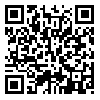Volume 2, Issue 4 (2014)
ECOPERSIA 2014, 2(4): 805-818 |
Back to browse issues page
Download citation:
BibTeX | RIS | EndNote | Medlars | ProCite | Reference Manager | RefWorks
Send citation to:



BibTeX | RIS | EndNote | Medlars | ProCite | Reference Manager | RefWorks
Send citation to:
Ariapour A, Shariff A R B M. Rangeland Fire Risk Zonation using Remote Sensing and Geographical Information System Technologies in Boroujerd Rangelands, Lorestan Province, Iran. ECOPERSIA 2014; 2 (4) :805-818
URL: http://ecopersia.modares.ac.ir/article-24-7178-en.html
URL: http://ecopersia.modares.ac.ir/article-24-7178-en.html
1- Faculty of Range Management Department, Islamic Azad University, Boroujerd Branch, Boroujerd, Iran
2- Faculty of Engineering Department, Geospatial Information Science Research Centre (GIS-RC), Putra Malaysia University, Malaysia, KL
2- Faculty of Engineering Department, Geospatial Information Science Research Centre (GIS-RC), Putra Malaysia University, Malaysia, KL
Abstract: (6042 Views)
Conflagration of forests and rangelands is one of the most frequent events in Iran. It is regarded as one of the most important parts of land degradation that occurred due to range destruction and desertification. This study was conducted in Boroujerd, Lorestan Province in west of Iran in 2013 to determine the fire risk model. The data prepared for the study area involved the vegetation types, land use, elevation, slope, aspect, standard topographic map and mean annual climatic data (evaporation, rainfall and temperature). Landsat ETM+ data were used for the image analysis. Analytical Hierarchical Process (AHP) model was applied to weigh and generate the fire risk map. Results showed that the highest weight of factors has been given to the land use because land use contribute to the maximum extent due to inflammability factor. The second highest weight was related to rainfall since it caused the biomass growth (fuel factor). Land use and rain played important roles in the modeling of fire risk zonation. The third one was attributed to the evaporation because of fuel drying and highly inflammability. The other variables comparatively had less impact on fire risk. Based on the statistics achieved for different weight classes, the map was reclassified into five classes as very low, low, moderate, high and very high in order to generate fire risk area map. Also, final map showed that most of the fires which occurred in the last year (5 fire control points about 4812.323 ha) might be put in the firing class of very high risk. Finally, about 42353.36 ha of the total area fell in the class of very high fire risk. The results indicated that 90% of burned areas were located in high risk class.
Article Type: مقاله Ø§Ø³ØªØ®Ø±Ø§Ø Ø´Ø¯Ù‡ از پایان نامه |
Subject:
Rangeland Management
Received: 2014/12/28 | Accepted: 2014/12/1 | Published: 2015/06/15
Received: 2014/12/28 | Accepted: 2014/12/1 | Published: 2015/06/15
| Rights and permissions | |
 |
This work is licensed under a Creative Commons Attribution-NonCommercial 4.0 International License. |







